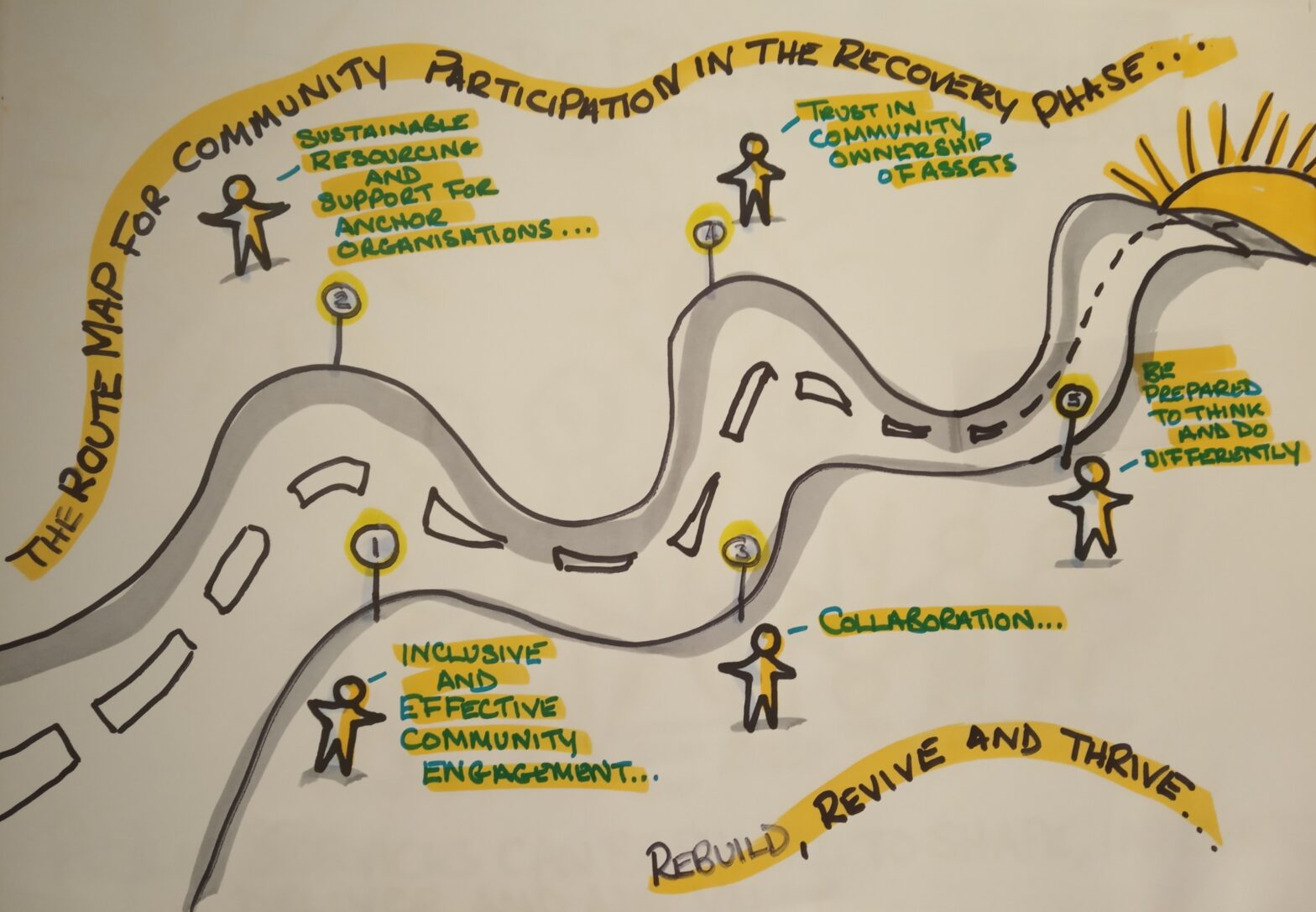Alice: “Would you tell me, please, which way I ought to go from here?” The Cheshire Cat: “That depends a good deal on where you want to get to.“ Alice: “I don’t much care where.” The Cheshire Cat: “Then it doesn’t matter which way you go.”
Unlike Alice I believe many of us do care where we go from here. There is the position of those of us who feel we should be looking forward to a better ‘normal’ rather than just going back to ‘normal’. The pandemic has brought huge pain, sadness and upheaval and the thought of coming through the other side to something brighter, something fairer, something kinder is what is helping many of us cope with the current uncertainty.
I have talked through the thinking behind The Route Map for Community Participation in the Recovery Phase in my blog posts in the middle of last year. The paper is now written and available here and short film summarising the paper is available here
This paper was prepared with the intention to explore the route to recovery to build back better to create a fairer society and how community participation could be key to making the positive changes we want to see.
As previously discussed , according to the World Health Organisation, experience has shown, where community involvement has been encouraged in areas where there have been natural disasters, it can produce wide-ranging advantages including a positive impact on the effects of trauma. As mental health and well-being is a major concern as a result of the pandemic, community participation could play a big part in reducing that impact.
The five steps proposed are not anything new, reflecting on the Christie Commission Report (2011) The community Empowerment Act (2015), but looking at the vision in the context of the pandemic and the community response to the emergency.
This is a widely accepted ideology. There are great examples of good practice, but we are still far away from seeing those transformational approaches as common place.
How do we bridge the gap between this accepted ideology and what is common practice?
There is a real shift in power needed however there are challenges with the nature of power to reassert itself. We also need to aim for empowerment initiatives which are socially transformational and encourage communities to imagine that they can make a difference.
I will try and expand on some of these hurdles next time.
But as Third Sector Practitioners working with our Public Sector colleagues the question is: How do we create a landscape receptive to Community Participation in the face of budgetary and other resource challenges?
I guess if the Route Map and other similar approaches are pointing the way to recovery and beyond and it is where we want to go, we need to find ways to prepare the road ahead and bridge those gaps.

